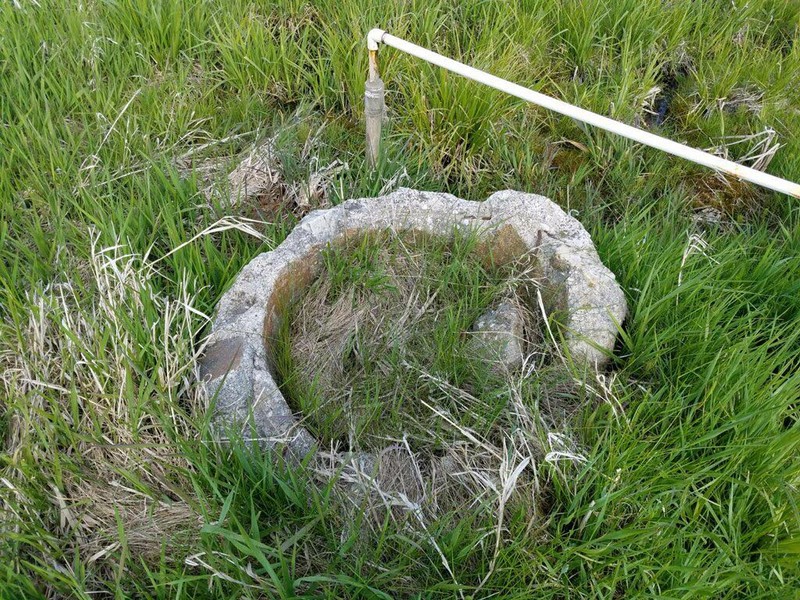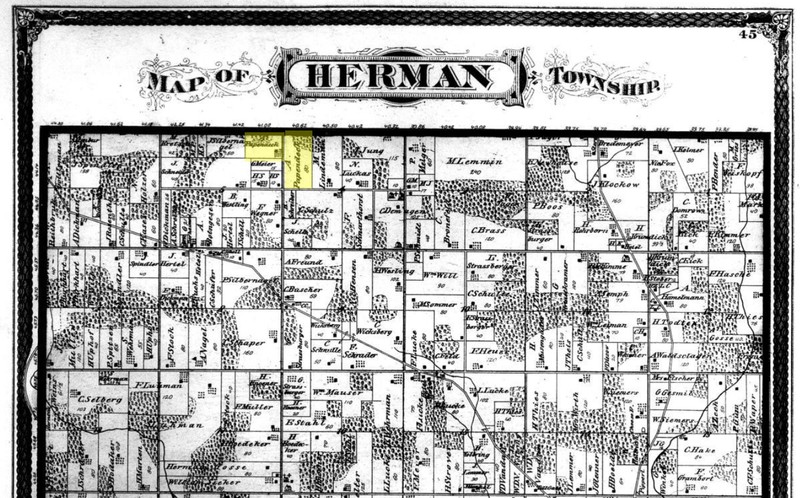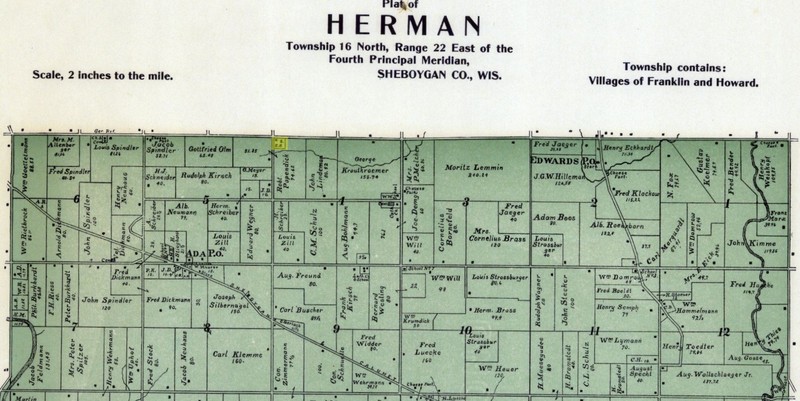Spring Corners Spring
Introduction
Text-to-speech Audio
Sitting at the corner of County Line Road and CTH-M is the Spring Corners Spring. This water source is an example of a glacial spring, where water flowing to a lake or river (in this case, Lake Michigan), flows out of an opening in the ground. Springs were important to the early peoples in Wisconsin, as they provided a source of fresh, clean water.
Images



Backstory and Context
Text-to-speech Audio
Located on the Northeast corner of County Line Road and CTH-M (technically Manitowoc County, but it’s a grey area right on the border) sits one of the area’s natural wonders. The natural spring in question is not an unusual occurrence to be found in our area. This section of the county sits in an area that was predisposed to the formation of glacial moraine springs. What is a glacial moraine spring? It is a spring that is formed where the water table finds an opening in the ground as it flows toward a lake or river. In this case, as it flows to reach the level of Lake Michigan. As fresh, clean water was hard to find in the early days of the settlement of the area, the spring was a natural draw for travelers and settlers. The spring has flowed for hundreds of years, quenching the thirst of all those that passed by.
The major beneficiaries of the spring would be whoever owned the land it sat on and the land directly to the south. That first person to own the land to the south was Friedrich Michael Andreas Papendieck, who went by Andreas. He purchased the 80 acres to the south and 40 acres to the southwest of the spring, creating a 120 acre farm after his arrival sometime between 1861 and 1865. The spring would be the perfect place for him to supply water to his family, animals, and crops. At the time the Papendiecks owned the land, the house that currently sits directly south of the spring did not exist. That home does not appear on the 1875 Atlas, but does appear on the 1889 Atlas. He would have to carry the water a short distance to his home which was on the west side of CTH-M about halfway between County Line Road and Primrose Lane.
In 1885, Papendieck sold a small section of his land (where the current home sits on the corner across from the spring) to John Grunewald. Unfortunately, he only owned the property for a short time and sold it back to Papendieck in 1892. However, at that time the home appears in records, so it is likely that Grunewald was the builder.
Our next resident is one Edwin Scheib. Scheib would have been very familiar with the area and the land. As a boy of 16, Edwin was a servant for the Schultz family who owned the property to the South/south. Around 1900, Scheib purchased the property and operated a tavern and lodging business on site. The 1905 census lists Edwin as a “hotel keeper” at the location. The spring would have made a very handy stop and benefited Mr. Scheib’s tavern. It would have been a great place for weary travelers to water their horses and then water themselves across the road at Scheib’s establishment.
Only a year later in 1906 the land again changed hands and became the home of Emil Raquet. While Emil used the building as a home, his brother built a blacksmith shop between the house and the home directly to the south. Again, the spring would have provided a necessary resource to any blacksmith shop….water! Without water, it is very difficult to quench hot metal, which is a necessary step in the process. The Raquets lived and operated on the site until 1924 when Emil sold the property. Sometime in 1927 or 1928, the blacksmith shop burnt down. Although they sold that property, the Raquet family remains in the area. Descendants of the family still live a short distance directly west of the property.
Although not much remains of the once small, but active farm community, the spring continues to run as it has done for hundreds of years. The spring is a reminder of just how important water is to sustaining life and what a draw it was for early settlers of the area. Take a step back in time and have a small taste of the clear and clean water. The same water that quenched the thirst of those that came before us!
Sources
The Importance of Glaciers to Wisconsin, January 15th, 2019. Accessed November 3rd, 2023. https://www.schlitzaudubon.org/2019/01/15/the-importance-of-glaciers-to-wisconsin/.
Sheboygan County Atlas 1875. Sheboygan, Wisconsin. G.A. Randall & Co., 1875.
Sheboygan County Atlas 1889. Sheboygan, Wisconsin. G.A. Randall & Co., 1889.
